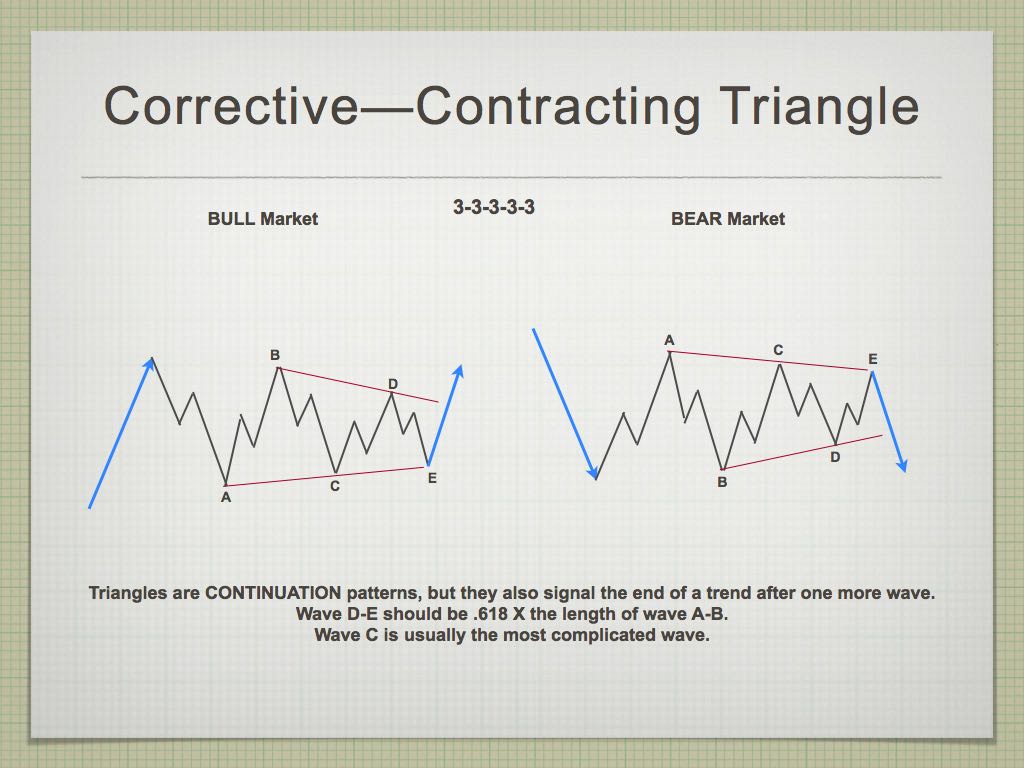
Contracting triangles are the most common type of triangle. When they’re in the fourth wave position, they predict an end to the entire trend with one more wave (fifth wave).
Rules (these are “hard” rules; they cannot be broken)
- A triangle always subdivides into five waves.
- At least four waves among waves A, B, C, D, and E each subdivide into a zigzag or zigzag combination.
- Wave C never moves beyond the end of wave B, wave D never moves beyond the end of wave C, and wave E never moves beyond the end of wave D (sometimes the Dow reading at the end of a triangle subwave can exceed a previous subwave’s ending value by a small amount as the market approximates an equal level, as it does in ascending and descending triangles (barrier triangles)). (The result is that going forward in time, a line connecting the ends of waves B and D converges with a line connecting the ends of waves A and C.)
- A triangle never has more than one complex subwave, in which case it is always a zigzag combination.
Guidelines (guidelines can be broken but it’s rare that they are)
- Usually, wave C subdivides into a zigzag combination that is longer lasting and contains deeper percentage retracements than each of the other snbwaves.
- Sometimes, wave D subdivides into a zigzag combination that is longer lasting and contains deeper percentage retracements than each of the other subwaves.
- Sometimes one of the waves. usually wave C, D, or E, subdivides into a contracting triangle. Often the effect is as if the entire triangle consisted of nine zigzags.
- About 60 percent of the time, wave B does not end beyond the start of wave A. When it does, the triangle is called a running triangle.
- Sometimes. either waves A and C, or B and D, will end at almost exactly the same level. When the flat line is on the top, it is called an ascending triangle; when it is on the bottom, it is called a descending triangle (both of these are barrier triangles).
- When wave 5 follows a triangle, it is typically either a brief, rapid movement, or an exceptionally long extension.



